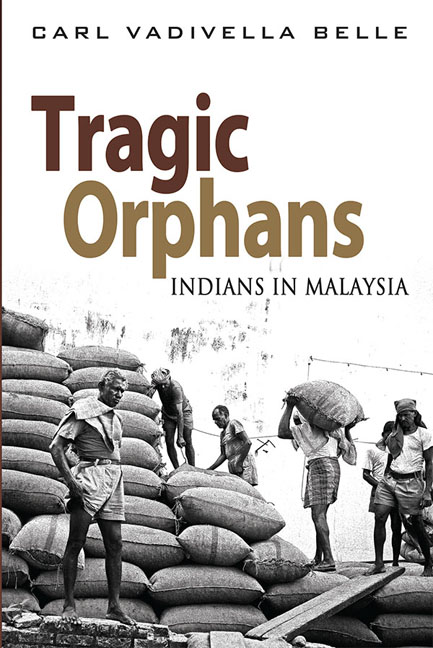Book contents
- Frontmatter
- Contents
- Acknowledgements
- List of Abbreviations
- Introduction
- 1 The Malay Peninsula: Early History, Melaka and the Colonial Setting
- 2 European Colonialism and the Malay Peninsula
- 3 India and the Development of British Ideologies of Empire
- 4 British Governance of Malaya
- 5 Slavery and Indentured Labour
- 6 Indian Indentured Labour in Malaya
- 7 Kangany Labour in Malaya
- 8 Other Indian Immigration
- 9 Indian Political Development to 1941
- 10 The Japanese Invasion, Subhas Chandra Bose and Indian Wartime Nationalism
- 11 The Post–war Period: Reform and Repression: 1945–48
- 12 From Federation to Merdeka
- 13 From Malaya to Malaysia: Singapore, 13 May and the New Economic Policy
- 14 The Mahathir Years: A Changing Malaysian Landscape
- 15 Abdullah Badawi, Islamization, and the Rise of Hindraf
- 16 Najib and 1Malaysia: A New Deal?
- Conclusions
- Bibliography
- Index
6 - Indian Indentured Labour in Malaya
Published online by Cambridge University Press: 06 June 2017
- Frontmatter
- Contents
- Acknowledgements
- List of Abbreviations
- Introduction
- 1 The Malay Peninsula: Early History, Melaka and the Colonial Setting
- 2 European Colonialism and the Malay Peninsula
- 3 India and the Development of British Ideologies of Empire
- 4 British Governance of Malaya
- 5 Slavery and Indentured Labour
- 6 Indian Indentured Labour in Malaya
- 7 Kangany Labour in Malaya
- 8 Other Indian Immigration
- 9 Indian Political Development to 1941
- 10 The Japanese Invasion, Subhas Chandra Bose and Indian Wartime Nationalism
- 11 The Post–war Period: Reform and Repression: 1945–48
- 12 From Federation to Merdeka
- 13 From Malaya to Malaysia: Singapore, 13 May and the New Economic Policy
- 14 The Mahathir Years: A Changing Malaysian Landscape
- 15 Abdullah Badawi, Islamization, and the Rise of Hindraf
- 16 Najib and 1Malaysia: A New Deal?
- Conclusions
- Bibliography
- Index
Summary
We have already noted that British control over the Straits Settlements and the FMS was followed by economic exploitation of its new possessions. The Malayan colonies were not only viewed as suppliers of raw materials and potential producers of tropical commodities which could be profitably retailed on the world market, but also as consumers of British-manufactured goods. The colonial authorities encouraged commercial plantation agriculture over every other form of enterprise. Early commercial agriculture concentrated upon the production of spices and pepper, but from the 1820s onwards, exports of both commodities were increasingly eclipsed by sugar. Sugar plantations, with their ceaseless demands for labour, were largely concentrated in Penang and Province Wellesley. Other plantations diversified into the cultivation of tapioca and coconuts. Throughout the 1870s, coffee and gambier estates were developed in Perak, Selangor and Negeri Sembilan. After the turn of the century, rubber production dominated the Malayan plantation industry. Later, the plantation economy widened to include the production of palm oil, tea and pineapple.
We also observed that British penetration of Malaya was supported by an ambitious programme of infrastructure development designed to promote and enhance economic activity. Successive colonial administrations embarked on a series of far-ranging projects which included capital works, the construction of ports, roads and railways, reticulated water supplies (at least to major towns and cities), and (later) the provision of an electricity grid and a telecommunications network.
The development of a viable colonial economy was dependent on ready access to a pool of cheap, pliable, and easily managed labour. As observed in Chapter 4, the Malays were not interested in hiring themselves for plantation or infrastructure labour and, in fact, the British made repeated attempts to insulate the Malays from the emerging colonial economy. Having thus ruled out indigenous labour, and after early and unsuccessful experiments with African slave labour, the British broadened their search to tap Chinese, Indian and Javanese coolie sources.
While the system of indentured labour furnished the majority of the Indian workforce in Malaya between 1844 and 1910, some of the earliest Indian labour was supplied by convicts. Between 1790 and 1860 approximately 80,000 Indian convicts were dispatched to various colonial destinations, not only to the Straits Settlements but also to Burma and Mauritius.
- Type
- Chapter
- Information
- Tragic OrphansIndians in Malaysia, pp. 75 - 102Publisher: ISEAS–Yusof Ishak InstitutePrint publication year: 2014

